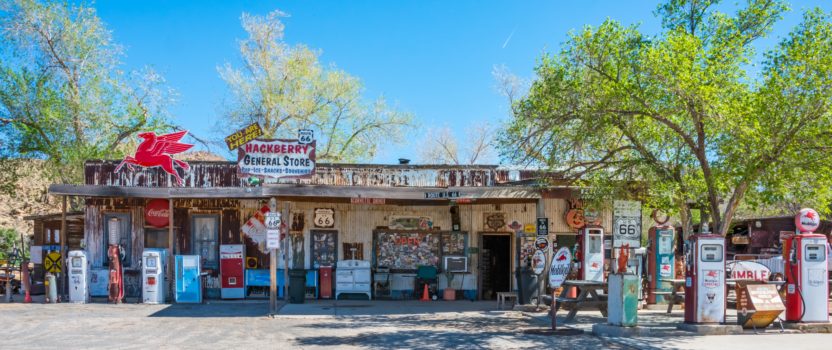19. Hackberry General Store
Though driving only about five miles down the road from Giganticus Headicus and Antares Point, I felt as if I had just been jettisoned through a time portal, transported from the future (perhaps by the alien grey in his flying saucer?) back to the past. What a study in contrast the Kozy Corner and the Hackberry General Store present! While the Kozy Corner is clean, uncluttered, and futuristic, if not also quirky, the Hackberry General Store is dusty, cluttered, and just plain old, if not also a bit decrepit. But for those on a quest for a classic Route 66 roadside experience, the Hackberry General Store, also known as the Northside Grocery, is not to be missed.
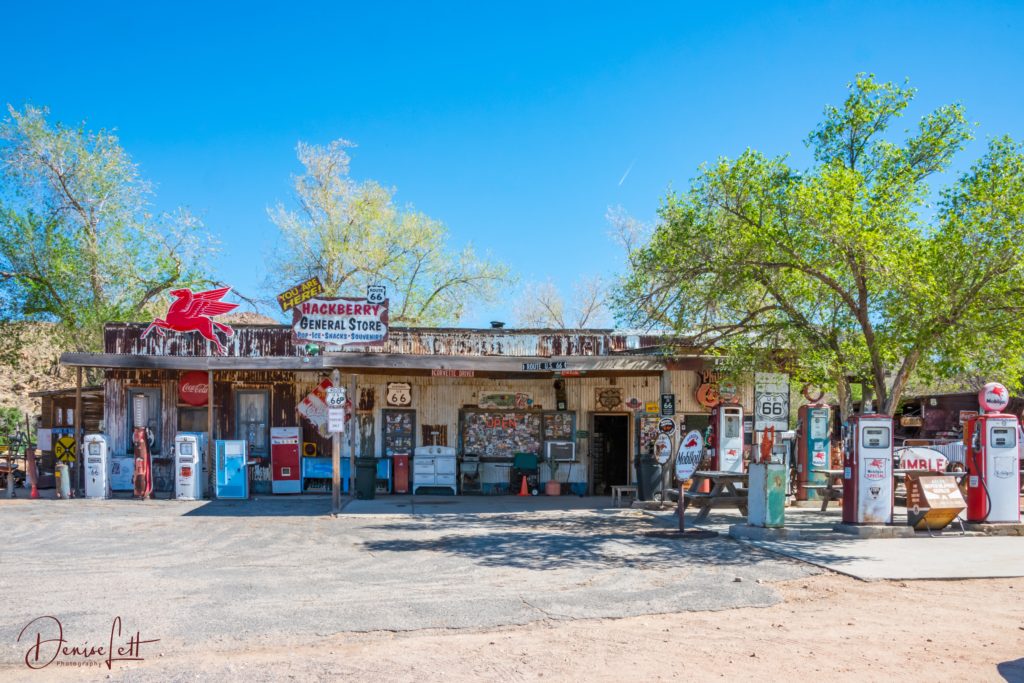
Despite the iconic Mobilgas Pegasus mounted on the roof and vintage gas pumps out front, gas is no longer available here, and hasn’t been for a long time. The Hackberry General Store and its Conoco gas station opened in 1934 when Route 66 was realigned north of the railroad tracks and of the village of Hackberry, which lies south of the tracks and through which the original Route 66 was routed in 1926. The store operated until 1978, when Interstate 40 bypassed Hackberry altogether. It wasn’t until 1992 that Bob Waldmire, an artist known for his artwork of Route 66, reopened the store as a visitor center and souvenir shop. John and Kerry Pritchards bought the property in 1998. Today, the place is a museum, a visitor’s center, and a souvenir shop all wrapped into one. [Jerry McClanahan in August 2017 has informed me that the Pritchards have since sold the Hackberry General Store.]
Inside and out of the store, a hodgepodge of things Route 66 assails the eyes. Inside: a larger- than-life Indian statue, a Texaco gas pump, a display of a 1950s diner complete with authentic booths and tables, photographs and posters of movie stars, souvenirs, and other Route 66 memorabilia.
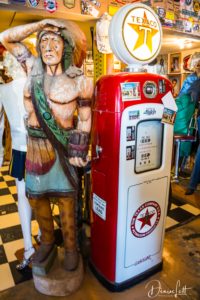
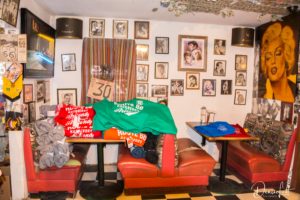
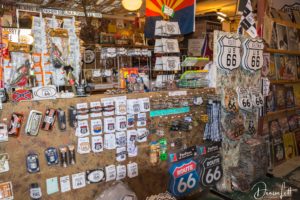
Outside: an eclectic collection of classic cars, vintage gas pumps, a rusted Greyhound Bus Stop sign, a cabin, a variety of tin signs, a stove, a wringer for squeezing out wet clothes, and countless other antiques.
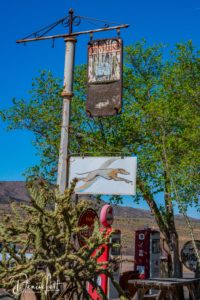
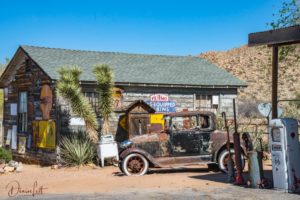
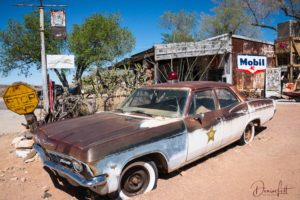
To the side of the store is a service garage with a life-size diorama of mechanics working on a real Model T flatbed truck. A Route 66 Hackberry tow- truck is parked alongside the service garage.
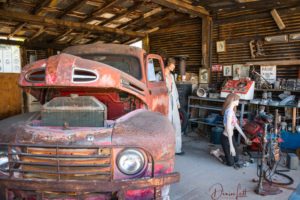
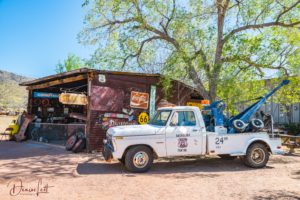
My favorite part is in the back yard. Here mounted on fence posts are six reproduction Burma-Shave roadside signs strung out along the fence with the following jingle:
BIG MISTAKE *** MANY MAKE *** STEP ON PEDAL *** INSTEAD OF BRAKE *** BURMA SHAVE
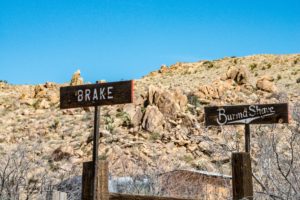
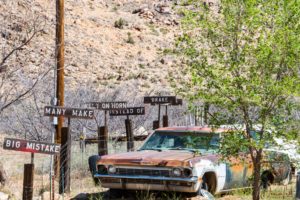
What’s nice about the display here is that I could fit all the signs (almost) in one photo frame. As these signs were originally used, they were strung out along the road (too far apart to capture in one frame) to be read sequentially by a passing motorist. Burma-Shave began using these roadside signs as an advertising gimmick in 1926. At first the words on the signs were basic advertising for the brand’s shaving products. In the 1930s, safety messages became popular, such as the one here. In 1963, with the expansion of the interstate highway system and the resultant increases in speed, reading small signs became more difficult and Burma-Shave discontinued the practice. Interestingly, reproductions of these sets of Burma-Shave signs were placed along part of the original Route 66 now designated as Arizona State Highway 66 or Historic Route 66 between Kingman, Arizona, and Ash Fork, Arizona, though Arizona was one of three states (along with Nevada and New Mexico) where Burma-Shave did not originally use this form of advertising because it was deemed traffic was not heavy enough.
Time to move on….
(to be continued….) SUBSCRIBE to my post at the very bottom of the page!
COPYRIGHTED MATERIAL

